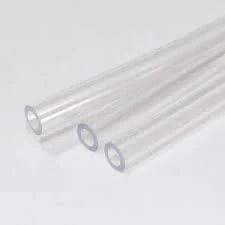វិច្ឆិកា . 01, 2024 02:35 Back to list
High-Quality Structural Pipe Fittings for Reliable Industrial Applications and Construction Projects
Understanding Structural Pipe Fittings
Structural pipe fittings play a crucial role in the construction and engineering industries, providing essential connections and support in various applications. These fittings are designed to join pipes, tubes, and other structural elements, ensuring that frameworks maintain their integrity while accommodating loads, stresses, and environmental factors. This article explores the importance, types, applications, and advantages of structural pipe fittings in modern construction.
Importance of Structural Pipe Fittings
The primary purpose of structural pipe fittings is to facilitate the construction of frameworks without compromising strength or safety. These fittings allow for the creation of complex designs that are necessary in architectural and structural engineering. Whether in buildings, bridges, or industrial facilities, the right fittings enable engineers and architects to realize their vision while maintaining structural integrity. Proper fitting selection is critical, as it influences the overall performance and durability of the constructed framework.
Types of Structural Pipe Fittings
1. Elbow Fittings Used to change the direction of the pipe layout, elbow fittings come in various angles, with 90-degree and 45-degree being the most common. They allow for seamless transitions in piping systems, facilitating efficient flow.
2. Tees Tees are used to create branching sections in pipelines, enabling fluid to flow in multiple directions. They come in equal and reducing sizes, accommodating various pipe diameters.
3. Couplings Couplings connect two sections of the same diameter, providing a straightforward way to extend pipe length or repair damaged sections.
4. Flanges Flanges are flat pieces that allow for the connection of pipes, providing a bolting mechanism for easy disassembly and maintenance. They are versatile and widely used across various industries.
5. Caps and Plugs These fittings serve to seal the ends of pipes, preventing leaks and keeping systems protected from contaminants.
6. Reducers Used to connect pipes of different diameters, reducers ensure a smooth transition between sizes, minimizing turbulence and pressure loss within the system.
structural pipe fittings

Applications of Structural Pipe Fittings
Structural pipe fittings are employed in diverse applications across multiple sectors. In construction, they form the backbone of frameworks for buildings, bridges, and scaffolding. In industrial settings, they are essential in piping systems for transporting fluids, gases, and materials. Additionally, structural pipe fittings are increasingly being utilized in agricultural applications, such as irrigation systems and livestock enclosures. Their versatility also extends to the manufacturing sector, where they assist in the assembly of machinery and equipment.
Advantages of Using Structural Pipe Fittings
The use of structural pipe fittings offers several benefits
1. Strength and Stability High-quality fittings provide robust connections that enhance the overall strength and stability of frameworks.
2. Versatility With a wide variety of shapes and sizes, structural pipe fittings can be adapted to suit various construction needs and configurations.
3. Ease of Installation Many fittings are designed for quick assembly, reducing installation time and labor costs.
4. Durability Made from materials like stainless steel, carbon steel, or PVC, these fittings can withstand harsh environmental conditions and resist corrosion, ensuring a longer lifespan.
5. Cost-Effectiveness When properly selected and installed, structural pipe fittings can reduce maintenance costs and extend the lifespan of piping systems, leading to overall savings in projects.
Conclusion
In conclusion, structural pipe fittings are an integral component of modern construction and engineering. Their ability to connect and support various structural elements ensures the safety and functionality of buildings, bridges, and industrial systems. Understanding the types and applications of these fittings helps engineers and constructors make informed decisions, ultimately leading to successful project outcomes. As construction technology advances, the importance of structural pipe fittings will continue to grow, contributing to more efficient and resilient infrastructure worldwide.
-
Durable PP Rigid Sheet: Lightweight, Chemical Resistant Solutions
NewsAug.21,2025
-
PVC Grey Sheet for Extraction: Chemical Resistant & Durable
NewsAug.19,2025
-
Durable PVC Pipe Fittings for Plumbing & Irrigation Needs
NewsAug.18,2025
-
HDPE Steel Belt Reinforced Spiral Corrugated Pipe | High Strength
NewsAug.17,2025
-
HDPE Pipe Fittings: Durable, Leak-Proof Solutions
NewsAug.16,2025
-
Premium CPVC Sheet: High-Temp & Chemical Resistant Solutions
NewsAug.15,2025

